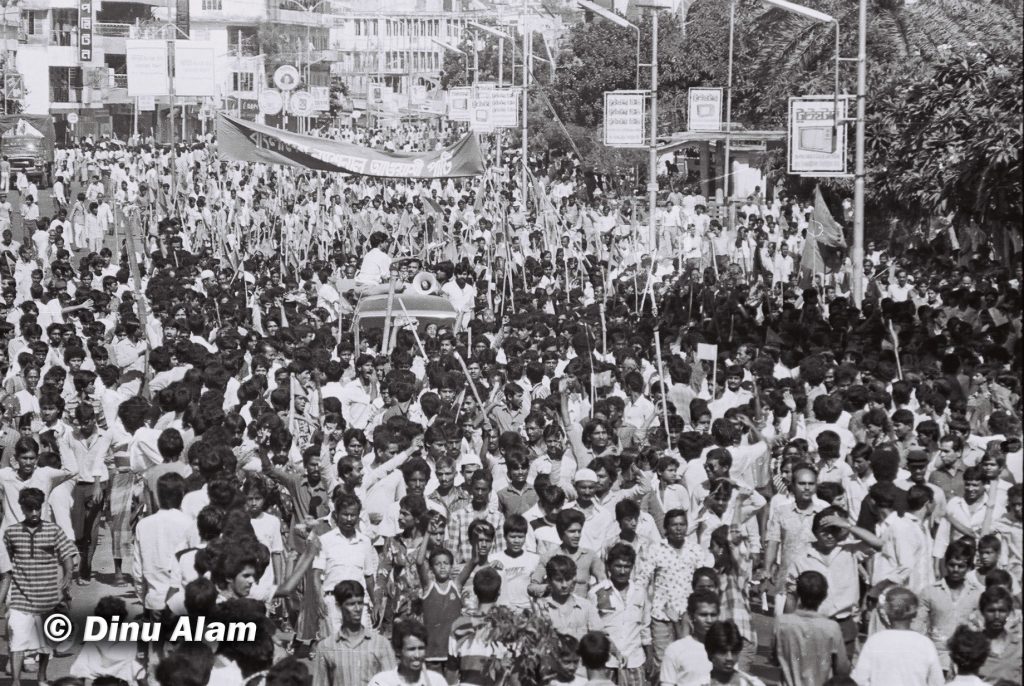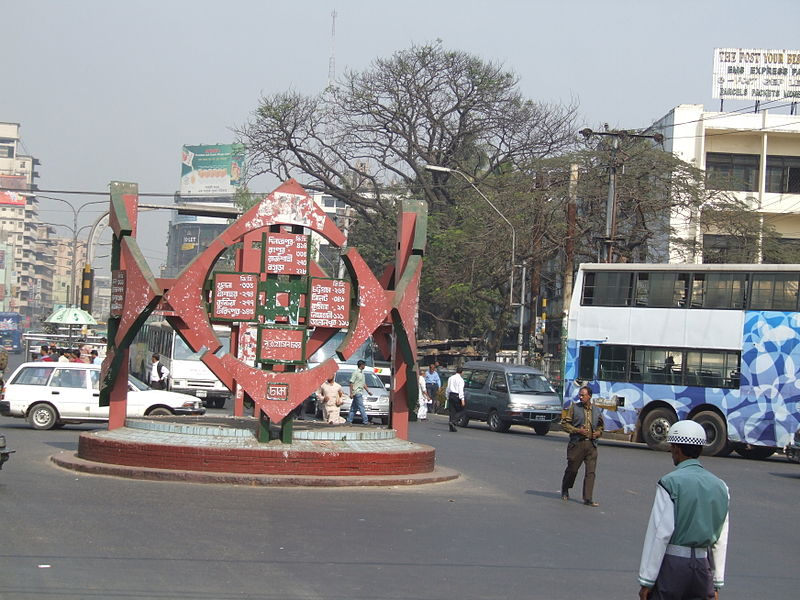1990 The Movement For Democracy in Bangladesh
Posted: 4 Feb,15 on History of Bangladesh
1990 The Movement for The Restoration of Democracy in Bangladesh.
At the ruling period (1982-1990) of the government of General Hussain Muahammed Ershad the prospect of democratic rule and the fate of the people of Bangladesh were turned back for a second time at the foot of `military gangsters’. The state structure and the will of the civilian administration became shattered under the military orders following the frequent forceful repressive activities. Realizing the situation the main two oppositions BNP & Awami League along with huge leftist militant components, other interest and pressure groups including students, intellectuals, professionals, trade unions workers and laborers turning on the street agitations were fighting for the return of the democratic rule in the country. This historic uneven political victory that was come to the fact through the collapse of the military dictatorship of General Ershad.
During this period, the two key opposition leaders Sheikh Hasina and Begum Zia met at least on two occasions. Both of them made up a joint statement on 9 November 1987 expressing their strong commitment to the successful culmination of the struggles. As a part of the security built up in preparation for the `Dhaka Seize’, the dictator banned all gatherings of more than five people; closed the University of Dhaka and drafted troops and paramilitary forces in the city. On the day of `Dhaka Seize’, thousands of cadres of the opposition political parties put the capital under siege, mounting massive demonstrations to force the dictator to resign. In the rare prospect of the opposition unity, protesters through guided political cadres fought front street battles with the military, para-military and police forces. The Home Minister of the junta cabinet announced on the evening of the siege day that three people had been killed during the day’s `disturbances’ and 73 were arrested. The counter claims made by Sheikh Hasina and Begum Zia had put the number of deaths at 12 when police opened fire on the demonstrators. The main area of conflict had been at a cross-roads between the national mosque of the capital and the government secretariat offices. Thousands of demonstrators get together at this point chanting “we have one point, one demand Ershad must go. A representative of the working class of the Dhaka city, Nur Hussain (scooter driver, a worker of the AL youth front) sacrificed his life while carrying the slogans: “Down with autocracy” (Sairachar nipat jak) on his chest, and on his back, he had written the slogan “Let Democracy Be Free” (Ganatantra mukti pak). His death increased the visibility of opposition sentiment directed against the Ershad government. As a pre-emptive measure, the military junta on 11 November 1987 arrested the two leading opposition figures-Sheikh Hasina and Begum Zia and put them under house detention for a month. Their continued detention led to further hartal and street violence up to 17 November 1987.
The movement for restoration of democracy could not make any further progress until the middle of 1990. It was only the month of June and July of 1990 that some sort of unity and understanding were restored within the three main opposition alliances. The various cultural and professional groups became united and urged the opposition political alliances to formulate a realistic programme for removing the dictator from power in the shortest possible time.
In the evening of 27 November 1990, the dictator proclaimed a state of emergency on the national television to preserve national security and save the national economy from the clutches of violence and destructive politics of the opposition. The proclamation suspended civil rights and banned all processions, meetings, rallies, demonstrations, strikes and lock outs. Under this emergency powers ordinance 1990, the dictator imposed press censorship stating that it would control the receiving and sending of news through post, radio, telegram, telex and telephone. The curfews were imposed for an indefinite period, along with the capital city of Dhaka and port-city of Chittagong, in the major cities of the country and all the school, colleges and universities of the country would remain closed for a month. The students of the Dhaka University had broken the curfew and came out of the campus shouting: “we do not accept emergency” and “down, down with Ershad.” 27 Large numbers of students and common men of Dhaka paraded the city streets protesting the proclamation of the state of emergency, the union of Dhaka University teachers announced their resignation in a body on 29 November 1990 in front of the APARAJEYA BANGLA, the most surprising is to see that a patriotic part of the police forces in a secret circular expressed their total solidarity with the people who were fighting for the restoration of democracy in the country, 19 MPs of the ruling JP including Deputy Prime Minister MA Matin resigned their seats, which ultimately forced Ershad to step down on 6 December 1990. The imminent departure of the dictator from the office of the President was celebrated on 6 December 1990 by millions of democracy loving people of Bangladesh when they paraded the streets of the capital and all over the country. Chief Justice of the Supreme Court, Mr Shahabuddin Ahmed to head a caretaker government until the national elections to be held in early next year.
The nine years of military rule of General Ershad from 1982 to 1990 was indeed the darkest episode in the history of post independent Bangladesh in terms of killings and injuries, arrests and warrants, lies and blunders, corruptions and plundering, and degradations of moral values of the society that all together triggered the annihilation of liberty, equality and freedom of the nation. The period was regarded as the hoard of heroic stories of the thousands of political activists who sacrificed their lives and limbs to guns, times and tides to prison and embraced huge trouncing of their social life at the trance to establish a dream worthy democratic society for the people of Bangladesh. Nur Hossains death is honored each year as cultural and political organizations sponsor special programs for observance the day. The day is officially commemorated as Shohid Noor Hossain Day in Bangladesh.
All photos in this gallery was captured by photographer Dinu Alam on 10 November 1987.
CATEGORIES
RECENT'S COMMENTED POST
Raw Hasan said "Nice list on the historic places of Bang..."
Web Application Developer (PHP) Needed | ABAC Technologies Ltd said "[…] learn about us, please check w..."
Faria Anan said "Thanks a lot for this describes..."
ABAC Technologies LTD is Top Rated at Upwork said "[…] LTD is a Top Rated Agency at U..."
POPULAR POSTS
Posted by Admin on theFebruary 25th, 2012 with 12 Comments
Posted by Admin on theOctober 23rd, 2014 with 11 Comments
Posted by Admin on theJanuary 6th, 2012 with 8 Comments



















